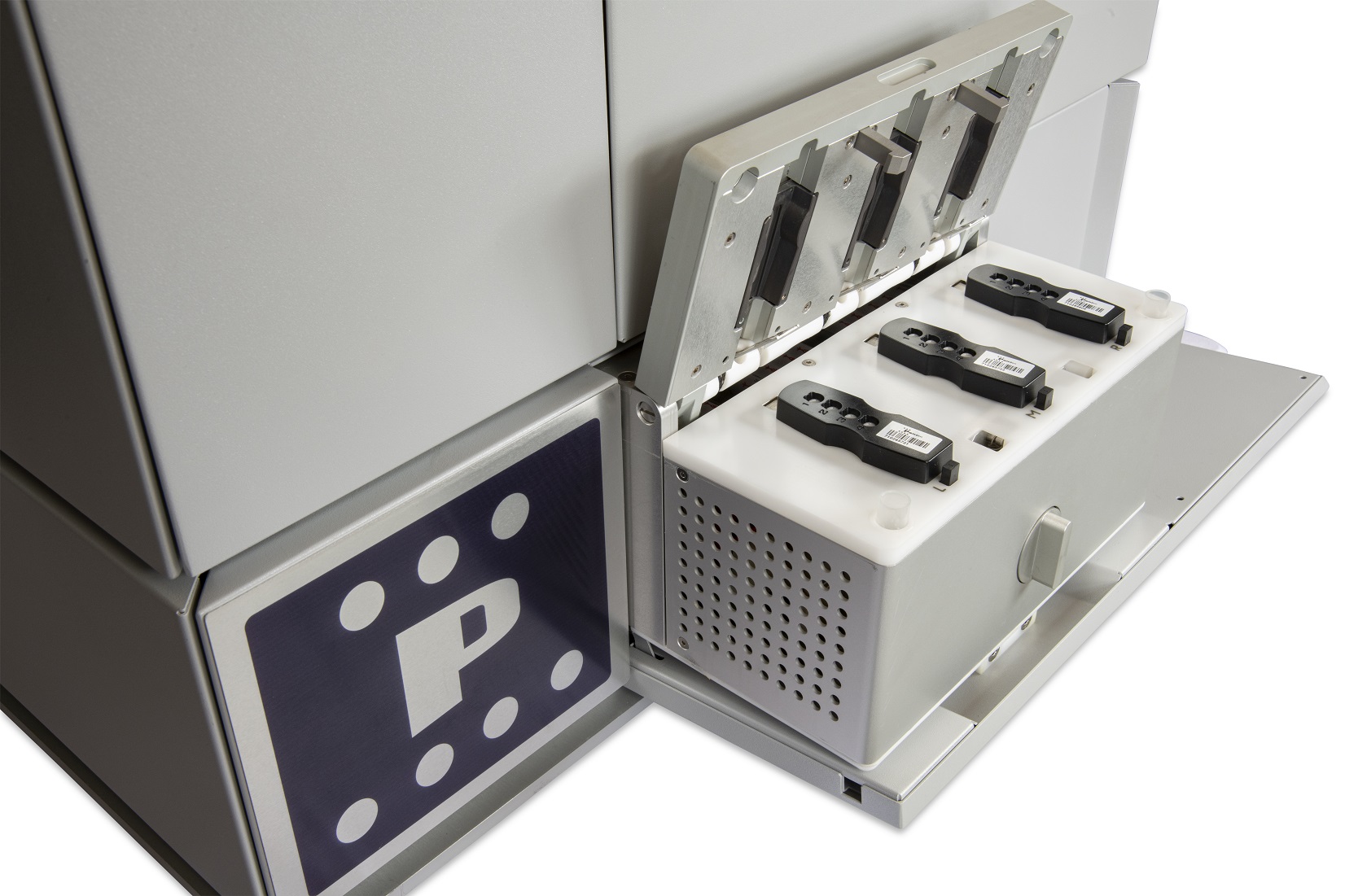Are you looking for thorough solutions for your questions regarding the role of kinases in your research? Measuring kinase activity using our unique multiplex assay provides deeper understanding of cellular signaling and target interaction.
Are you looking for thorough solutions for your questions regarding the role of kinases in your research? Measuring kinase activity using our unique multiplex assay provides deeper understanding of cellular signaling and target interaction.
Building on 15 years of experience, PamGene has developed a unique technology with unprecedented sensitivity, making real-time measurement and understanding of kinase activity possible. The multiplex properties of our chip enable us to look at the bigger picture of cellular signaling. It makes you see the activity changes in pathways, and allows the generation of a kinase-based response biomarker, biochemical identification and kinase inhibitor selectivity profiling a.o.
As fellow scientists we are eager to learn about your challenges. We’re happy to schedule an online meeting to see how our approach can benefit your research.
Building on 15 years of experience, PamGene has developed a unique technology with unprecedented sensitivity, making real-time measurement and understanding of kinase activity possible. The multiplex properties of our chip enable us to look at the bigger picture of cellular signaling. It makes you see the activity changes in pathways, and allows the generation of a kinase-based response biomarker, biochemical identification and kinase inhibitor selectivity profiling a.o.
As fellow scientists we are eager to learn about your challenges. We’re happy to schedule an online meeting to see how our approach can benefit your research.
PamGene’s technology can be implemented in your study in multiple ways:
PamGene’s technology can be implemented in your study in multiple ways:

Kinases are the most intensively studied protein targets. We have developed a unique method to understand them. Our sensitive platform uses lysates obtained from only a few thousand cells or small amounts (2ug) of animal, xenografts or human tissues and cells to simultaneously determine the activity of all kinases present in these lysates.
This is accomplished by incubating the lysates across 196 to 144 tyrosine or serine/threonine kinase peptide substrates immobilized on the PamChip® microarray platform. Our 3D microarrays are spotted with peptides (i.e. phosphosites) that represent kinase targets. Kinases present in the lysates will phosphorylate the peptide substrates which are detected using fluorescently labelled antibodies. The phosphosites on the PamChips are human-derived and there is significant overlap with other organisms.
Based on current online knowledge, we compiled a comprehensive, integrated database (DB) of potential kinases that are linked to the peptides on the PamChips. This corresponds to ~350 unique kinases in literature, covering the majority of the kinome.
Kinases are the most intensively studied protein targets. We have developed a unique method to understand them. Our sensitive platform uses lysates obtained from only a few thousand cells or small amounts (2ug) of animal, xenografts or human tissues and cells to simultaneously determine the activity of all kinases present in these lysates.
This is accomplished by incubating the lysates across 196 to 144 tyrosine or serine/threonine kinase peptide substrates immobilized on the PamChip® microarray platform. Our 3D microarrays are spotted with peptides (i.e. phosphosites) that represent kinase targets. Kinases present in the lysates will phosphorylate the peptide substrates which are detected using fluorescently labelled antibodies. The phosphosites on the PamChips are human-derived and there is significant overlap with other organisms.
Based on current online knowledge, we compiled a comprehensive, integrated database (DB) of potential kinases that are linked to the peptides on the PamChips. This corresponds to ~350 unique kinases in literature, covering the majority of the kinome.

